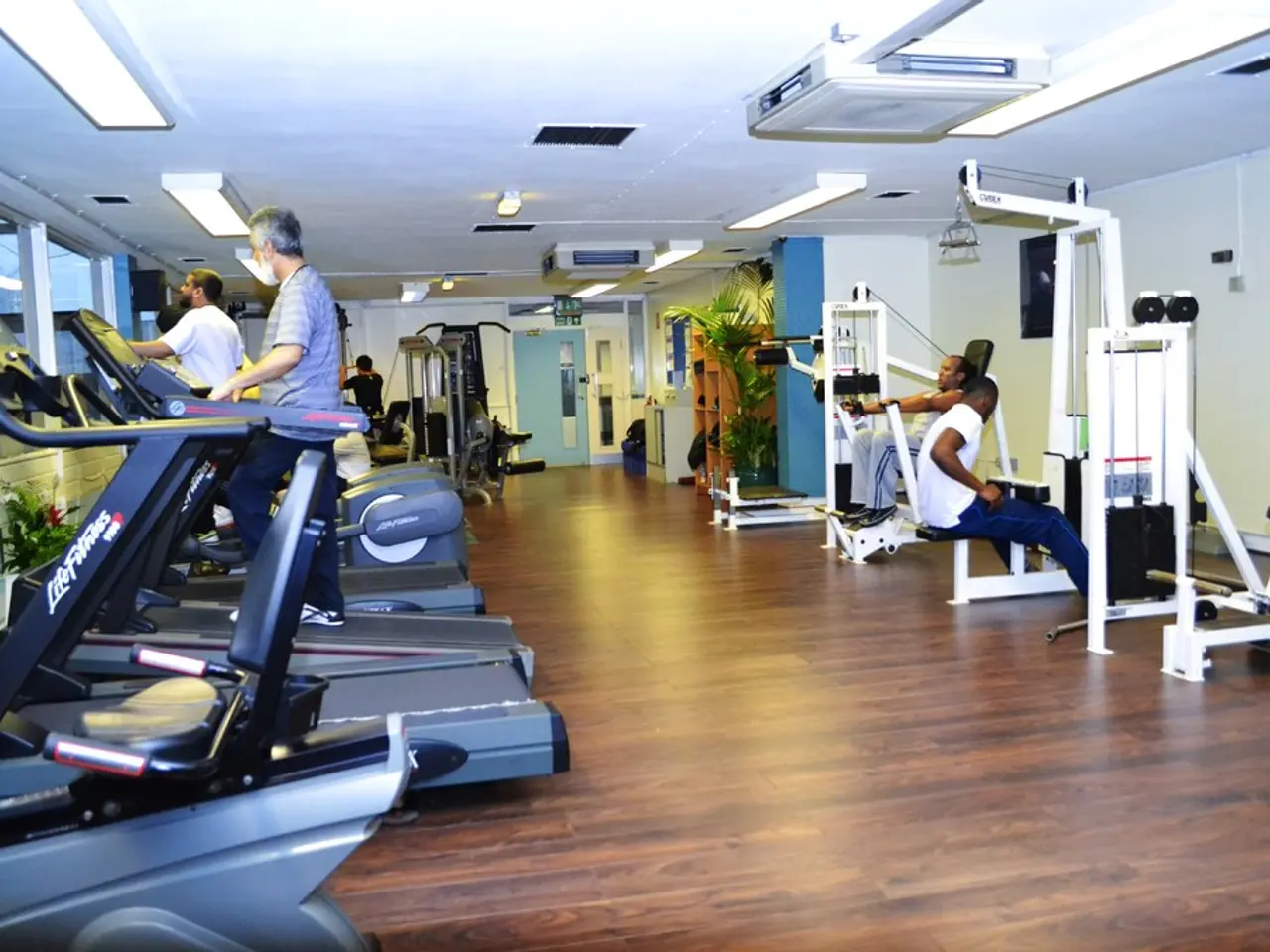New to strength training? A fitness specialist suggests these three exercises to enhance lower body strength:
**Strengthen Your Lower Body with Box Squats, Assisted Reverse Lunges, and Glute Bridges**
For those looking to build lower body strength and improve mobility, a combination of three exercises – box squats, assisted reverse lunges, and glute bridges – can be an effective starting point. These exercises, when performed correctly, can help combat bone loss, improve balance, and prevent falls as you age.
**Box Squats**
To perform box squats, start by standing with feet about shoulder-width apart. If using a barbell (advanced), rest it on your upper traps and stand about two feet in front of a plyometric box that is slightly below knee height. Engage your core and sit hips back slowly, lowering yourself until your butt lightly taps the box. Maintain proper form by ensuring a deeper squat position than thighs parallel to the ground. Explode back up to standing using your hips and hamstrings.
For beginners or those new to weightlifting, use a box roughly knee-height to practice form and control. As you progress, you can add load progressively, starting with dumbbells then moving to barbell box squats at about 50% of your back squat 1RM to maintain explosiveness over heavy load. Increase box height or depth as mobility and strength improve.
**Assisted Reverse Lunges**
To perform assisted reverse lunges, stand with feet hip-width apart and hold onto a stable support (like a rail or TRX strap) for balance. Step one leg backward, lowering your knee toward the ground while keeping the front knee aligned over the ankle. Engage your core and glutes to push back up to standing. Repeat for reps on one side, then switch legs.
As balance and strength improve, reduce or remove assistance gradually. Add dumbbells or kettlebells held at sides or a barbell on your back for resistance. Increase range of motion or add a tempo (slower eccentric phase) to increase time under tension.
**Glute Bridges**
To perform glute bridges, lie on your back with knees bent and feet hip-width apart, flat on the floor. Engage your core and squeeze your glutes to lift your hips until your body forms a straight line from shoulders to knees. Hold at the top briefly, then lower slowly.
Progressions for glute bridges include increasing hold time at the top, adding resistance by placing a barbell or weight plate on your hips, and progressing to single-leg glute bridges to increase demand on stability and strength. Eventually, you can advance to hip thrusts with upper back supported on a bench for greater range of motion and load.
---
**Summary Table of Progressions**
| Exercise | Beginner | Intermediate | Advanced | |--------------------|-------------------------------|--------------------------------|------------------------------| | Box Squats | Bodyweight, box ~ knee height, slow descent | Add dumbbells or lighter barbell (50% 1RM), deeper squat | Barbell box squats, explosive reps, heavier weight | | Assisted Reverse Lunges | Use support (rail/TRX), bodyweight | Reduce support, add dumbbells | Bodyweight or loaded, increased tempo or depth | | Glute Bridges | Bodyweight lifts, hold at top | Add weight on hips, increase hold time | Single-leg glute bridges, hip thrusts with load |
Prioritize proper form, core engagement, and controlled movement throughout all stages to maximize strength gains and minimize injury risk.
Incorporating science-driven fitness and exercise, personal training programs can include box squats, assisted reverse lunges, and glute bridges to target lower body strength and improve mobility. These health-and-wellness focused workout techniques can help enhance balance and prevent falls, making them beneficial for all ages.
Adding weights to box squats can help build explosiveness while maintaining proper form, ensuring improvement in both strength and mobility. Similarly, adding resistance to assisted reverse lunges and adjusting tempo can increase time under tension, enhancing muscle development and overall fitness.
Meanwhile, progressing from bodyweight exercises to more advanced forms, like single-leg glute bridges and hip thrusts, can integrate additional components of fitness and exercise into a well-rounded personal training plan focused on health and wellness.




